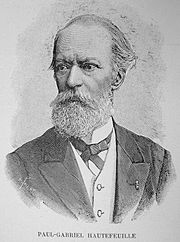Design
Design
Personality
Chart Properties
Your Cross represents the specific theme of your life. This cross embodies your unique potential & the lessons you're here to learn, providing a roadmap to fulfilling your life purpose.
We use the UTC birth time and date to do the calculations required to generate your Human Design chart.
Buy Tokens
Pay as you use, no expiry and no subscription required.Prompt Ideas
Get inspired with some epic prompt ideas.Gene Tunney's Biography
American boxer who became heavyweight boxing champion of the world by defeating Jack Dempsey in ten rounds in 1926. He held the title until 1928, winning 56 fights in his career. He retired from the boxing world in 1928 after banking his $2 million in winnings. His later careers included successful executive and officer of several corporations and banks.
The son of a longshoreman, Tunney had three brrthers and a sister. He was called “Gene” by his little sister who couldn’t pronounce “Jim” and the moniker stuck. At age 16 he went to work but with his slim tall athletic build, at 6’1″ about 155 pounds, he preferred boxing. In 1917, he joined the US Marines, fighting in France. He exhibited his lightweight boxing skills that gave his a championship in the American Expeditionary Force in 1918. After he returned home, he resumed his boxing career. In 1922, he captured the light-heavywieight championship of the US from his opponent Battling Levinsky. He shortly afterward lost the title to Harry Greb, regaining it in a subsequent match.. It was the match for the title on September 23, 1926 in Philadelphia, that elevated him to star status.The rematch on September 22, 1927, in Chicago gave the decision to Tunney after an exhibition of his amazing skills, including rebounding from the floor on the count of “nine” in the seventh round. On July 26, 1928 he defeated Tom Heeney of New Zealand at Yankee Stadium. It was his last fight and he was a winner. He finished his career with over 65 games and only that one defeat against Grebs.
Tunney was elected to the Boxing Hall of Fame in 1955 and is the author of “A Man Must Fight” in 1932 and “Arms for the Living” in 1941. His love for learning included an enthusiasm for Shakespeare. With little formal education he lectured on the great Bard in front of 200 Yale University students. For his efforts he was made an honorary member of Pundits, a “society of wits and scholars.”
Tunney was married to Carnegie heiress Polly Lauder and had three sons and a daughter. One of his sons, John Tunney, became a U.S. Senator from California.
Tunney died 11/07/1978, Greenwich, CT. The New York Times obituary said he had been suffering “from circulation ailment.”
Link to Wikipedia biography
Your Cross represents the specific theme of your life. This cross embodies your unique potential & the lessons you're here to learn, providing a roadmap to fulfilling your life purpose.
We use the UTC birth time and date to do the calculations required to generate your Human Design chart.
Prompt Ideas
Get inspired with some epic prompt ideas.David Whiting Sr.
2/4 Emotional - Solar Plexus Manifesting GeneratorMelanie Catherine Eisenhower
6/2 Sacral GeneratorBeatrix Braukmüller
6/3 Emotional - Solar Plexus ProjectorLaurent Blanc
3/5 Sacral Manifesting Generator





